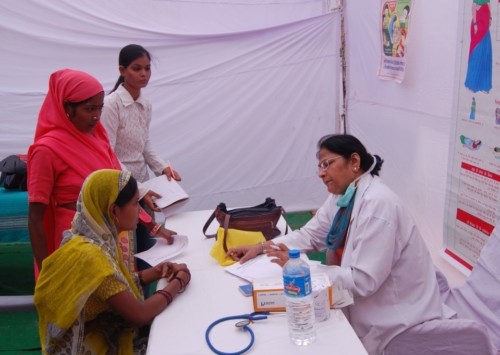India’s obese growing in numbers

Consumption of junk food and unhealthy lifestyle patterns are on the rise, particularly in OECD countries
Obesity, a major health concern worldwide has been recorded to be on a rise even in India, as a recent OECD report points out, highlighting the urgent need for public awareness and initiatives.
Around the world, the obesity epidemic, as it has been termed, is spreading even as the pace has slowed down from before. The Organisation for Economic Co-operation and Development (OECD) released an Obesity Update 2017 report, which states that more than one in two adults and one in six children are overweight or obese in the OECD area. Social disparities can be observed in terms of obesity incidence, and women have been recorded as being more obese than men. India too is no exception as the country with a steady rate of increase in the number of obese people albeit with challenges of hunger and malnutrition prevalent in the country.
The new OECD report has pointed out that the United States of America (US), Mexico, New Zealand and Hungary record highest rates of obesity in adults whereas Japan and Korea record the lowest. As per the report, more than one in two adults and nearly one in six children are overweight or obese in the OECD area. OECD projections show a steady increase in obesity rates until at least 2030. There are expectations that obesity levels are set to rise rapidly, at least until 2030. In US, Mexico, and England, 47 pc, 39 pc and 35 pc of the population respectively are projected to be obese in 2030.
Today is #EOD2017. Where does your country rank on this @OECD chart? Let’s tackle #obesity together – join the alliance! Thx @janemartinopc pic.twitter.com/Qwli8lILm9
— European Obesity Day (@EOD2017) May 20, 2017
The report highlighted that the likeliness of people from a lower socio-economic status as well as those with lower levels of education increases the chance of being overweight or obese. Women were noted to be generally more prone to obesity than men. The report also noted that “obesity damages labour market outcomes that, in turn, contribute to reinforcing existing social inequalities.” It added, “Obese people have poorer job prospects compared to normal-weight people, they are less likely to be employed and have more difficulty re-entering the labour market.”
Some policies were noted by the report that could help in tackling obesity, as well as those already under implementation in OECD countries. As practices that could help tackle obesity, communication through mass media for public awareness, social networking and technological means for campaigns aimed at health promotion as well as food labelling and regulation of unhealthy products, were noted.
Tackling #obesity: Simple logos on food labels help people make healthier food choices. Read more here: https://t.co/C9aFnRtFwO #EOD2017 pic.twitter.com/Pgs6Eo1H9u
— OECD Social (@OECD_Social) May 20, 2017
Obesity in India
Obesity is usually associated with rising income and rapid urbanisation leading to sedentary lifestyles. Yet, food choices made in the lack of nutritional knowledge as well as several genetic predispositions and factors come into play to result in rising obesity. In terms of plain numbers, other reports put India as the third largest population of obese people in the world. However, being truly diverse, India is a country of stark contrasts and even with obesity on the rise, the country was ranked 97 out of 118 countries in the 2016 Global Hunger Index.
Though obesity hasn’t become an epidemic in India if one were to compare it to the OECD countries, in urban areas it has taken a steady gain. The OECD report pegs numbers at 5 pc for the population in India, with more obese women than men. These figures have been predicted to go up and without dedicated campaigns and efforts to make nutrition a concept understood by citizens of the country, India will most likely see a large growth in obesity in the coming future.













